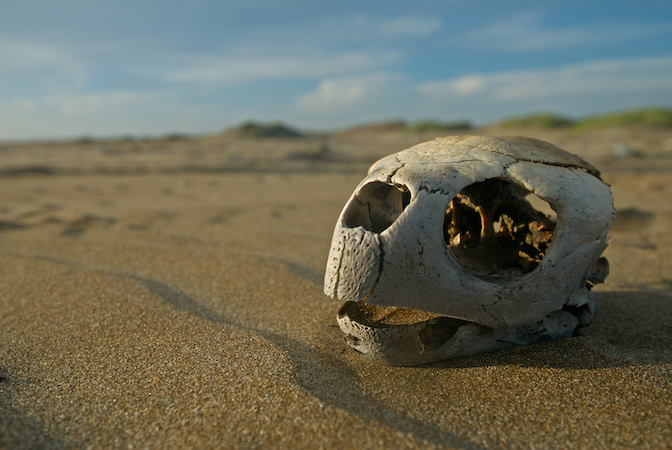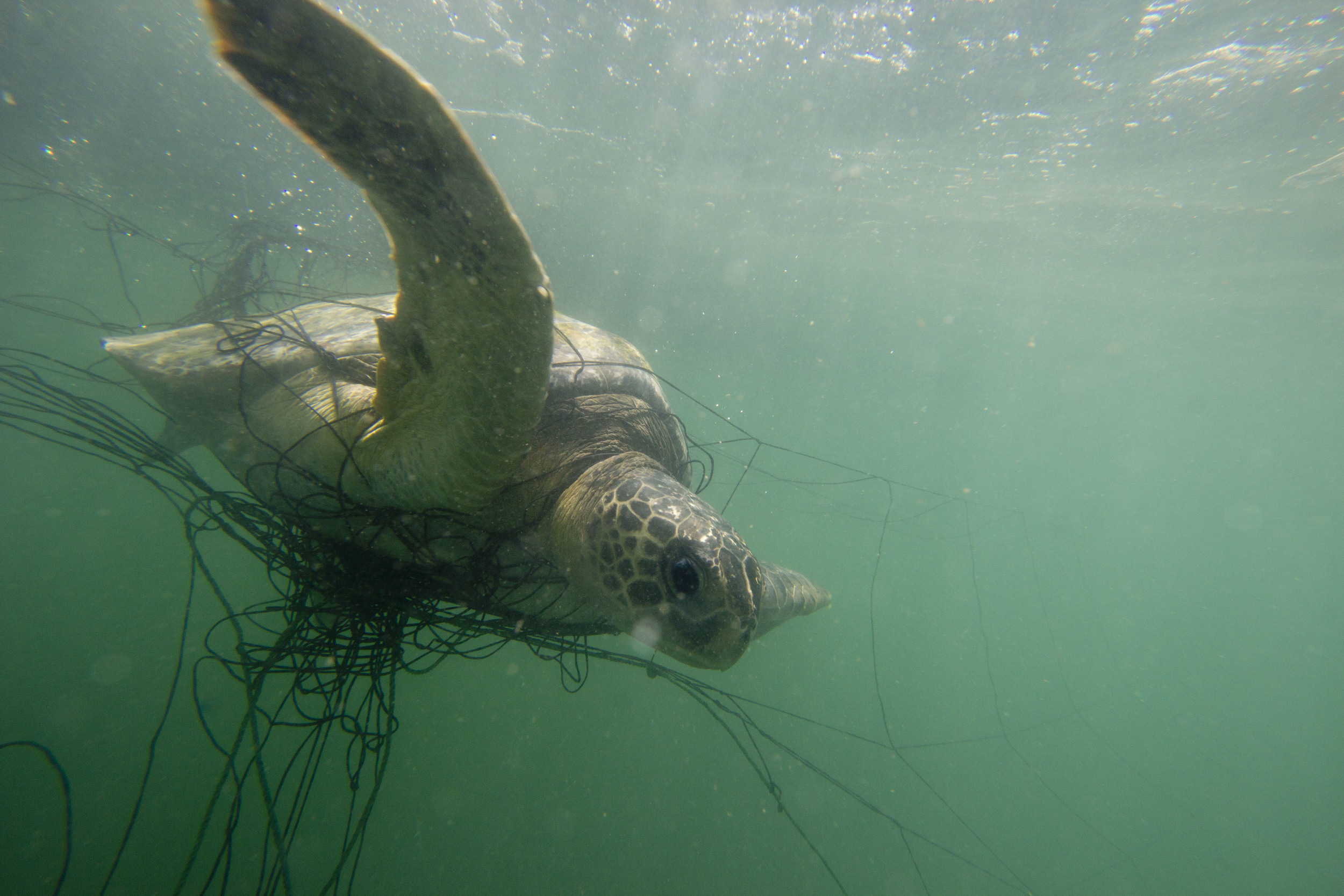
Sea Turtle Threats
Worldwide, six of the seven sea turtle species are classified as threatened or endangered due to human actions and lifestyles. From getting caught in fishing gear to people eating their meat and eggs, there are lots of ways that these animals are affected by people.
*If you found this page through the Seaspiracy movie website, please note their information is incorrect and misleading. There is no recent data that suggests 250,000 sea turtles are injured by fishing boats in the US per year. Please check this link for more information on what else the movie got wrong.
6 Top Threats To Sea Turtles
Entanglement in fishing gear: Turtles get caught on long-lines, in shrimp nets, and get injured with bomb fishing.
Consumption and illegal trade of eggs and meat: Turtle eggs are considered to be an aphrodisiac in many places (with no basis in science) and their meat (primarily green turtles) is still consumed, even though both are illegal in most countries.
Coastal development: Building on nesting beaches, mangroves, and other important coastal areas can affect turtles ability to nest and feed and prevent hatchlings from surviving.
Plastic and other marine debris: Turtles eat plastic, get caught in it, have to wade through it in the water and on beaches, and microplastic can affect nests and hatchlings.
Global warming: Rising temperatures increase sand temperatures, which can cause only females to be born. Climate change also impacts sea level rise, which can erode nesting beaches, and cause coral bleaching, an important habitat for hawksbills.
Turtleshell Trade: Hawksbill turtles in many places are prized for their shells, which are used as decorations or turned into products like jewelry and other crafts.
Global Status
The world's seven sea turtle species are classified as follows according to the Red List of Threatened Species by the International Union for the Conservation of Nature (IUCN).
Leatherbacks: Vulnerable - Biggest threats are getting caught in fishing gear, consumption of their eggs, and plastic pollution.
Greens: Endangered - Biggest threats are consumption of their meat and eggs and unsustainable coastal development.
Loggerheads: Vulnerable - Biggest threat is bycatch from fishing.
Hawksbills: Critically Endangered - Biggest threat is the turtleshell trade.
Olive Ridleys: Vulnerable - Biggest threats are consumption of their eggs, getting caught in fishing gear, and unsustainable coastal development.
Kemp's Ridleys: Critically Endangered - Biggest threats are oil spills and coastal development.
Flatbacks: Data Deficient - Biggest threats are fishing, coastal development, and their eggs and meat being eaten.
IUCN Definitions:
Critically Endangered: Species is considered to be facing an extremely high risk of extinction in the wild.
Endangered: Species is considered to be facing a very high risk of extinction in the wild.
Vulnerable: Species is considered to be facing a high risk of extinction in the wild.
Data Deficient: Species that cannot be evaluated because of insufficient information.
What is SEE Turtles?
We're a nonprofit organization that protects sea turtles through conservation travel and volunteer tours, our Billion Baby Turtles, Too Rare To Wear, & Sea Turtles & Plastic programs, our education programs, and by promoting inclusivity in the sea turtle community. Our award-winning programs help save sea turtle hatchlings on important nesting beaches around the world, work with the tourism industry to end the turtleshell trade, and get plastic out of sea turtle habitats. Learn more about our organization.
Photo credits: Neil Ever Osborne


